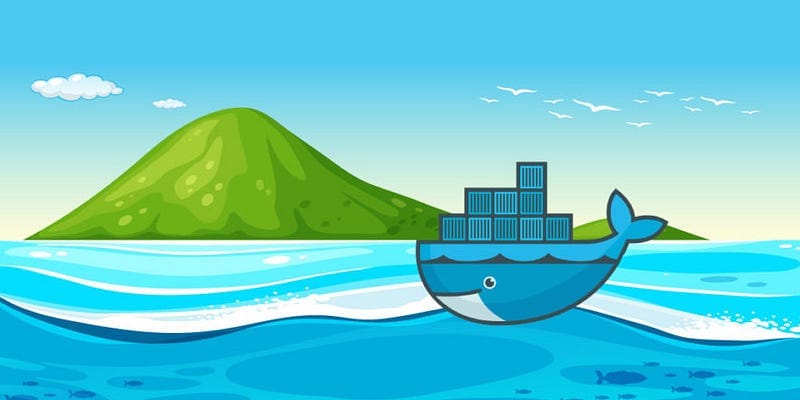A Beginner’s Guide to Understanding Containers: What, Why, and How
If you’ve ever wondered what containers are and why everyone seems to be talking about them, don’t worry — you’re not alone! Containers might sound intimidating, but at their core, they’re quite simple. Let’s break it all down step by step so even if you’re new to this, you’ll walk away with a solid understanding.
The Journey to Containers
To understand containers, we need to take a quick journey through how we’ve been running applications over the years. Each step along the way has improved how we handle servers and applications.
1. The Old-School Way: Bare Metal
Imagine you want to host a website or run a web server. Back in the day, you’d have to set up your own physical server (a big, noisy computer) or rent one from a provider. Your application would run directly on this machine.
While this approach works, it comes with a lot of headaches:
- You need to buy hardware, set it up, and keep it running.
- Any time you need more power, you have to get another physical server.
- You’re responsible for keeping everything up to date — hardware, operating systems, and software.
Managing these servers is complex, expensive, and takes a lot of time. It’s like owning a car: you have to worry about every little thing, from oil changes to flat tires.
2. A Better Way: Virtual Machines (VMs)
Then came virtual machines (VMs). Instead of running everything directly on the server, VMs allow you to run several “virtual computers” on one physical server. Each VM acts like its own little computer, with its own operating system, memory, and files.
Why is this better?
- Flexibility: You can run multiple applications on one physical server, each in its own VM.
- Security: VMs are isolated from each other. If one crashes, the others keep running.
- Efficiency: You don’t need a new physical server for every application; you can spin up a new VM instead.
However, running a full operating system for each VM comes with some cost. It uses more memory and processing power because you’re running “mini computers” on top of the real one.
3. The Modern Cloud: Virtual Machines in the Cloud
Now imagine you don’t even own the physical servers anymore. Instead, companies like Amazon (AWS) or Microsoft (Azure) rent out their servers to you. You can spin up virtual machines in their data centers as needed.
This solves the problem of buying and maintaining hardware. You still manage the software running inside the VMs, but you don’t have to worry about the hardware or the data center.
While this is a big improvement, it still involves running full operating systems for each VM, which means you’re using more resources than you might need.
Enter Containers: A Smarter Solution
Here’s where containers come in. Containers solve the problems of VMs by giving you the benefits (isolation, flexibility, and security) without the overhead of running full operating systems.
What Is a Container?
A container is a lightweight, self-contained package that includes everything your application needs to run: the code, tools, libraries, and settings. But unlike a VM, a container shares the host operating system. This means:
- Less overhead: You don’t need a full operating system for each container.
- Faster startup: Containers are smaller and start almost instantly.
- Efficient resource use: Since containers share the same OS, they use fewer resources.
Think of containers like a bento box: each compartment holds its own food, but they all share the same box. The compartments keep everything separate (isolation), but the box itself is a shared resource (the host OS).
How Do Containers Work?
Containers rely on a few features built into Linux (a popular operating system):
- Namespaces: This keeps containers isolated. A container can only see its own processes, files, and network.
- Control Groups (cgroups): This limits how much memory and CPU each container can use.
- Chroot: This locks a container into its own little “world” on the host system.
By combining these features, containers create a secure and efficient environment for running applications.
Why Containers Are Awesome
Here are a few reasons why containers have become so popular:
- Portability: Build your container once, and it will work anywhere: your laptop, a server, or the cloud.
- Efficiency: Containers use fewer resources than VMs, so you can run more applications on the same hardware.
- Speed: Containers start up quickly, making them great for scaling up applications on demand.
- Consistency: Everything your app needs is inside the container, so it works the same no matter where you run it.
Conclusion
Containers are the result of years of evolution in how we run applications. They’re like a happy middle ground between the flexibility of VMs and the efficiency of running directly on a server. With tools like Docker and Kubernetes, containers are now easier than ever to use, even for beginners.
If you’ve been intimidated by the idea of containers, don’t be! They’re just a way of bundling up your application so it can run anywhere, safely and efficiently. And the best part? You don’t need to be a Linux wizard to start using them.
Happy containerizing! 🎉



